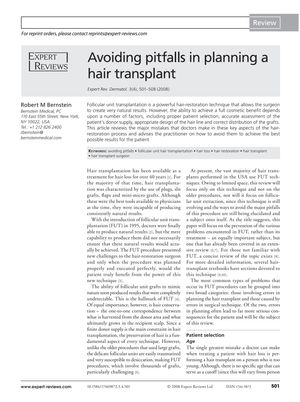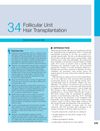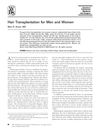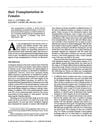Avoiding Pitfalls in Planning a Hair Transplant
July 2008
in “
Expert Review of Dermatology
”
hair transplant follicular unit transplantation FUT patient selection donor hair supply scalp laxity donor density miniaturization hairline graft distribution chronic sun exposure graft survival hair loss progression finasteride follicular unit extraction hair cloning donor hair graft sun exposure hair loss Propecia FUE

TLDR Proper planning for hair transplants is crucial for natural results, with careful patient selection and strategic graft placement being key factors.
The 2008 document highlights the critical aspects of planning in hair transplantation, particularly follicular unit transplantation (FUT), to ensure natural-looking and satisfactory results. It underscores the importance of patient selection, noting that young patients with unstable hair loss patterns and high expectations, as well as those with psychological conditions like body dysmorphic disorder (BDD) or depression, are not ideal candidates. The document stresses the need for a thorough assessment of the donor hair supply, considering factors such as scalp laxity, donor density, and miniaturization. It advises against creating an overly low or unnatural hairline and recommends strategic graft distribution with higher density in the frontal area while being cautious with crown coverage. The document also acknowledges the impact of chronic sun exposure on graft survival and future hair loss progression, even in patients responding to finasteride. It concludes that while technical advancements like follicular unit extraction have improved, the major breakthrough is expected from hair cloning, which was anticipated to be at least 5-10 years away from the document's publication date.





